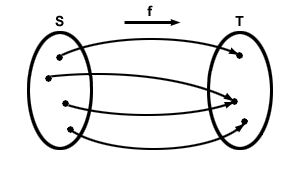Please wait while we process your payment
If you don't see it, please check your spam folder. Sometimes it can end up there.
If you don't see it, please check your spam folder. Sometimes it can end up there.
Please wait while we process your payment

By signing up you agree to our terms and privacy policy.
Don’t have an account? Subscribe now
Create Your Account
Sign up for your FREE 7-day trial
By signing up you agree to our terms and privacy policy.
Already have an account? Log in
Your Email
Choose Your Plan
Individual
Group Discount
Save over 50% with a SparkNotes PLUS Annual Plan!
 payment page
payment page
Purchasing SparkNotes PLUS for a group?
Get Annual Plans at a discount when you buy 2 or more!
Price
$24.99 $18.74 /subscription + tax
Subtotal $37.48 + tax
Save 25% on 2-49 accounts
Save 30% on 50-99 accounts
Want 100 or more? Contact us for a customized plan.
 payment page
payment page
Your Plan
Payment Details
Payment Summary
SparkNotes Plus
You'll be billed after your free trial ends.
7-Day Free Trial
Not Applicable
Renews May 1, 2025 April 24, 2025
Discounts (applied to next billing)
DUE NOW
US $0.00
SNPLUSROCKS20 | 20% Discount
This is not a valid promo code.
Discount Code (one code per order)
SparkNotes PLUS Annual Plan - Group Discount
Qty: 00
SparkNotes Plus subscription is $4.99/month or $24.99/year as selected above. The free trial period is the first 7 days of your subscription. TO CANCEL YOUR SUBSCRIPTION AND AVOID BEING CHARGED, YOU MUST CANCEL BEFORE THE END OF THE FREE TRIAL PERIOD. You may cancel your subscription on your Subscription and Billing page or contact Customer Support at custserv@bn.com. Your subscription will continue automatically once the free trial period is over. Free trial is available to new customers only.
Choose Your Plan
This site is protected by reCAPTCHA and the Google Privacy Policy and Terms of Service apply.
For the next 7 days, you'll have access to awesome PLUS stuff like AP English test prep, No Fear Shakespeare translations and audio, a note-taking tool, personalized dashboard, & much more!
You’ve successfully purchased a group discount. Your group members can use the joining link below to redeem their group membership. You'll also receive an email with the link.
Members will be prompted to log in or create an account to redeem their group membership.
Thanks for creating a SparkNotes account! Continue to start your free trial.
We're sorry, we could not create your account. SparkNotes PLUS is not available in your country. See what countries we’re in.
There was an error creating your account. Please check your payment details and try again.
Please wait while we process your payment

Your PLUS subscription has expired
Please wait while we process your payment
Please wait while we process your payment

Functions
A function is a system by which the elements of one set are all assigned to exactly one element of another set. A function may take real numbers and, according to some rule, assign them all to an integer value. A function like this might, for example, round every real number up to the nearest integer. Thus, 1.2, 1.009, and 2 would all be rounded up to 2. The set of real numbers is called the domain of this function, and the set of integers is called the range. The elements of the domain are the inputs of the function, and the elements of the range are the outputs. To go from an input to an output, a rule is needed--in this case, the rule is that every real number shall be rounded up to the nearest integer.
Every function has these three parts: a domain, a range, and a rule. A function is named by a single letter. If the function f, for example, assigns each element in the set S a correspondence with a unique element in the set T, then it is written f : Sâ√ú’T. In this case, S is the domain of f, and T is the range of f. All that is left for f is a rule by which the correspondence between S and T is made. For the sake of simplicity, let S and T be the same set: real numbers (often the domain and range of a function are the same). Let the rule by which the function f assigns a correspondence between S and T be that every member of S is doubled to be a member of T. Then, the rule can be written this way: f (x) = 2x, where x is any element of S. Hence, for a given element of S, its corresponding element in T has twice the value.
It is important that in a function every input is assigned to exactly one output. That is, every element in the domain of a function must have one and only one corresponding element in the range of that function. The purpose of a function is to assign a value from another set (the range) to each value in a given set (the domain), so if there were more than one element of the range that corresponded to one element in the domain, the function would be ambiguous, and useless. It is acceptable, however, if more than one element in the domain corresponds to the same element of the range. When this happens, every element of the domain still has one and only one counterpart in the range. The following diagram might make these concepts more clear. It is a conceptual illustration of a function.

The trigonometric functions have different domains and different ranges. The rule for trigonometric functions is different for each function, and depends on certain ratios created by the terminal and initial sides of the angle. In the next section the trigonometric functions will be defined.
Please wait while we process your payment

